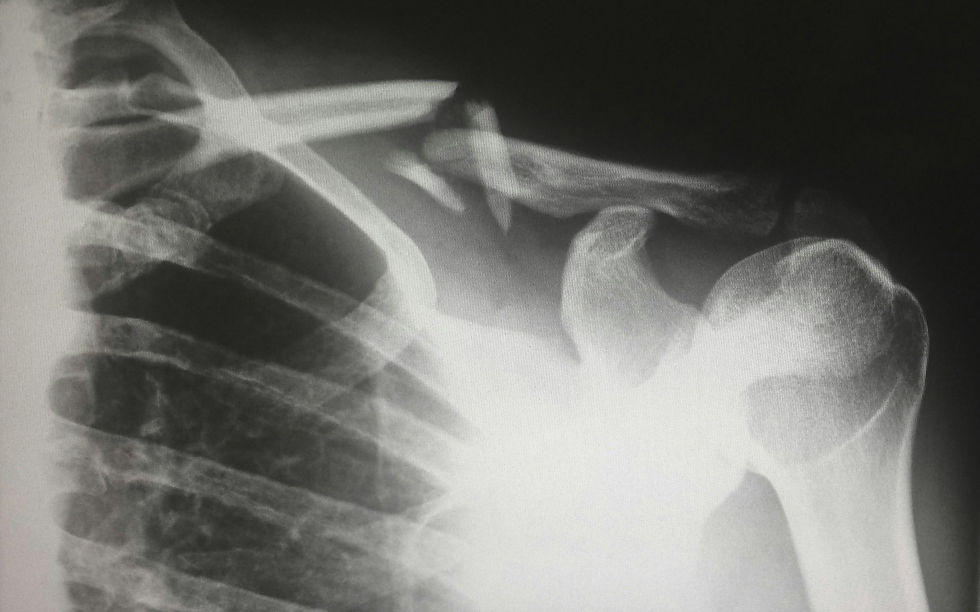Spanning The Globe November 2025
- marketingc8
- Nov 19
- 3 min read
It’s time to go spanning the globe for anatomy news and notes!
Get the Point?
We highly recommend this thoughtful rundown, posted on the Irsaeli publication Haaretz, on what’s currently known about our history with crafting hunting tools and how that played out in terms of the successful establishment (or not) of various human species.
“Stone tools began over 3 million years ago mainly as crude hammers,” says the author, Ruth Schuster. “These artifacts would evolve into hand axes, choppers, scrapers and other implements that helped us kill and eat animals, all this over a million years before our species emerged. The later development of the spear to stab, then to throw would have changed the very trajectory of human evolution, conferring upon us the ability to kill dangerous animals from a safe distance.”
New findings, as always, are driving new thought. Until recently, Schuster notes, the earliest artifacts identified as arrowheads were found in South Africa’s Sibudu Cave and are about 70,000 years old. New artifacts, which are “postulated to be arrowheads” and from about 80,000 years ago have been found in the Obi-Rakhmat rock shelter in Uzebekistan.
This article is highly readable and breaks down a key element of human survival and development—learning to diversify your weaponry in the hunt. Highly recommended.
Old Stuff
Speaking of old stuff, here’s a handy list from History.com—“The 8 Oldest Artifacts Ever Discovered.”
Oldest Stone Tool.
Oldest Structure.
Oldest Decorative Shells.
Oldest Cave Paintings.
Oldest Musical Instrument.
Oldest Sculptures.
Oldest Boat.
Oldest Wheel.
Here are the answers (but not in the right order) so you can give yourself a little test:
10,000 Years Old.
142,000 Years Old.
3.3 Million Years Old.
476,000 Years Old.
65,000 Years Old.
5,200 Years Old.
40,000 Years Old.
43,000—35,000 Years Old.
Head to the link to check your answers!
(Of course, we do believe the list will be subject to what future scientists unearth.)
Oh The Fish Bites
Let’s jump even further back in time—say, 310 million years ago. A University of Michigan paleontologist named Matt Friedman has identified “the earliest known example of a toothy, tongue-like apparatus for biting.” The discovery marks the moment that “fish first took advantage of their gill bones to innovate the way they feed.”
Stated the University of Michigan news article: “The fish, called Platysomus, lived at the beginning of the Pennsylvanian period, at a time when a group of fish called ray-finned fish were exploring new ways to make a living—including how they ate. Like most fish alive today, such as goldfish, salmon, cod and tuna, Platysomus was a ray-finned fish.”
Friedman and others discovered that the Platysomus had a plate of teeth suspended by a cradle of jointed bones that also supported the gills it used to breathe. Interestingly, the discovery was made by performing CT scans on three-dimensional fish fossils in a UK museum. “Painstaking digital dissections,” the article noted, “revealed the trademark features of a tongue bite.”

More Old
This month’s “Spanning the Globe” is brought to you by the word “old” and we have one more example, an article in the New York Times about the discovery of the oldest “and most complete pachycephalosaur fossil ever found.”
The pachycephalosaur, by the way, was an herbivorous dinosaur known for its extremely thick, bony skull dome. They lived during the Late Cretaceous period in what is now North America, and their most famous member is the Pachycephalosaurus. While once thought to have head-butted each other, modern research suggests they likely used their domes for display or may have attacked from the side.
The new discovery was made by Tsogtbaatar Chinzorig, a paleontologist at North Carolina State University, in Mongolia’s Gobi Desert. He stumbled upon what would turn out to be “the oldest and most complete pachycephalosaur fossil ever found.” The specimen is estimated to be 115 to 108 million years old, or 14 million years earlier than scientists had thought these dinosaurs “first evolved their helmet-like heads.”
The fossil is expected to be studied for years to come. This particular set of bones was a juvenile and scientists have already determined that the dinosaur’s helmet head was surprisingly well developed for a youth. “That tells us that this dome structure was an incredibly important aspect of pachycephalosaur biology,” said one scientist. “It evolved very early in their history, and then they just kept that strategy up through time.”
.
.
.
.




Comments